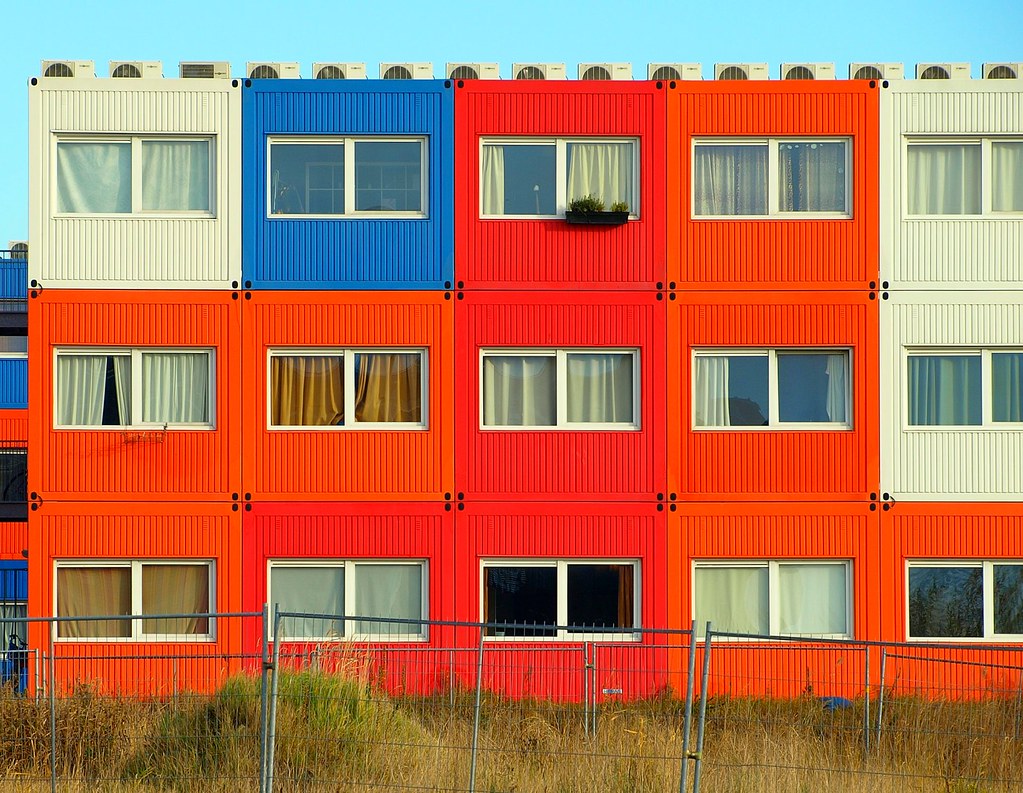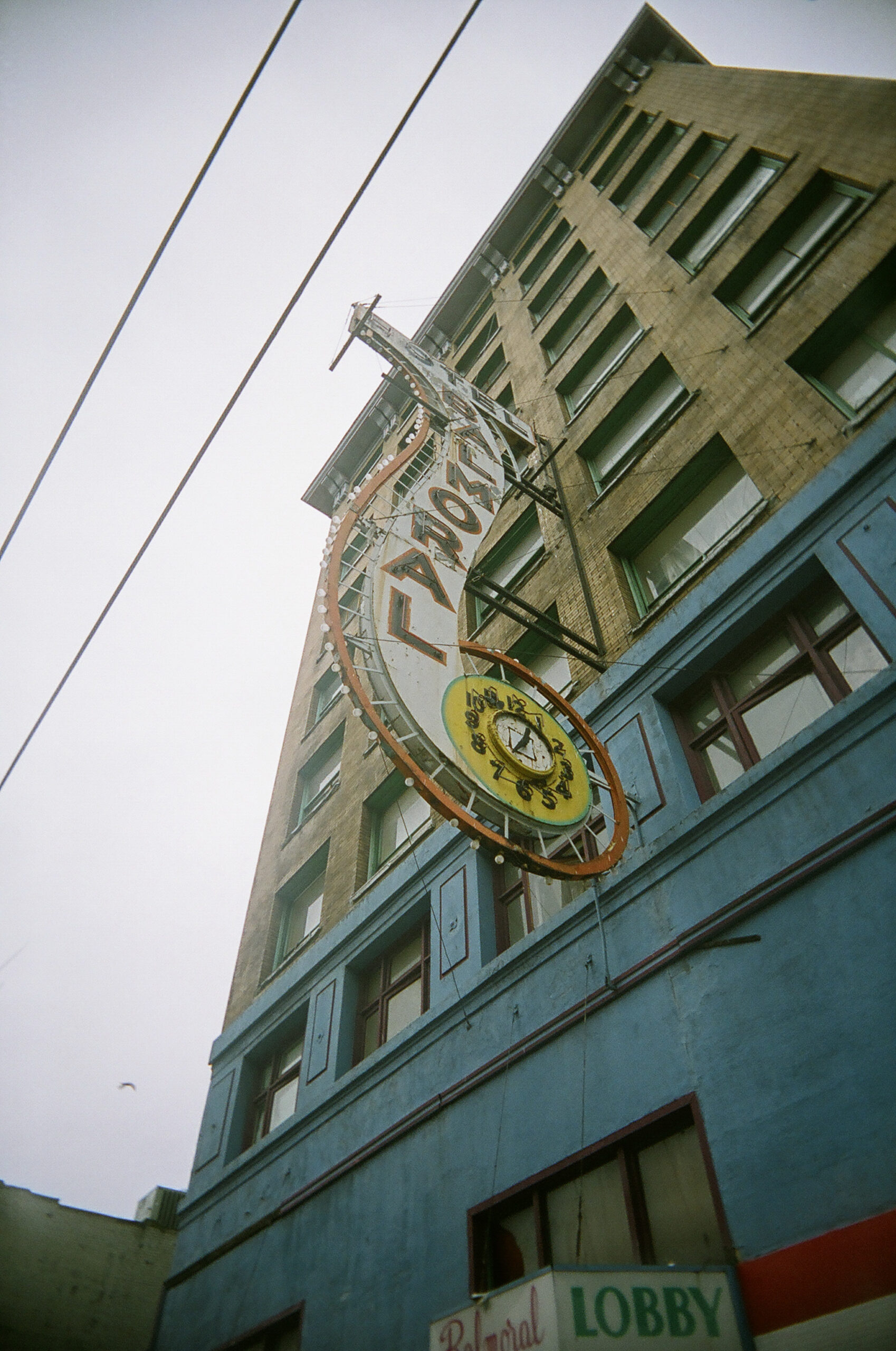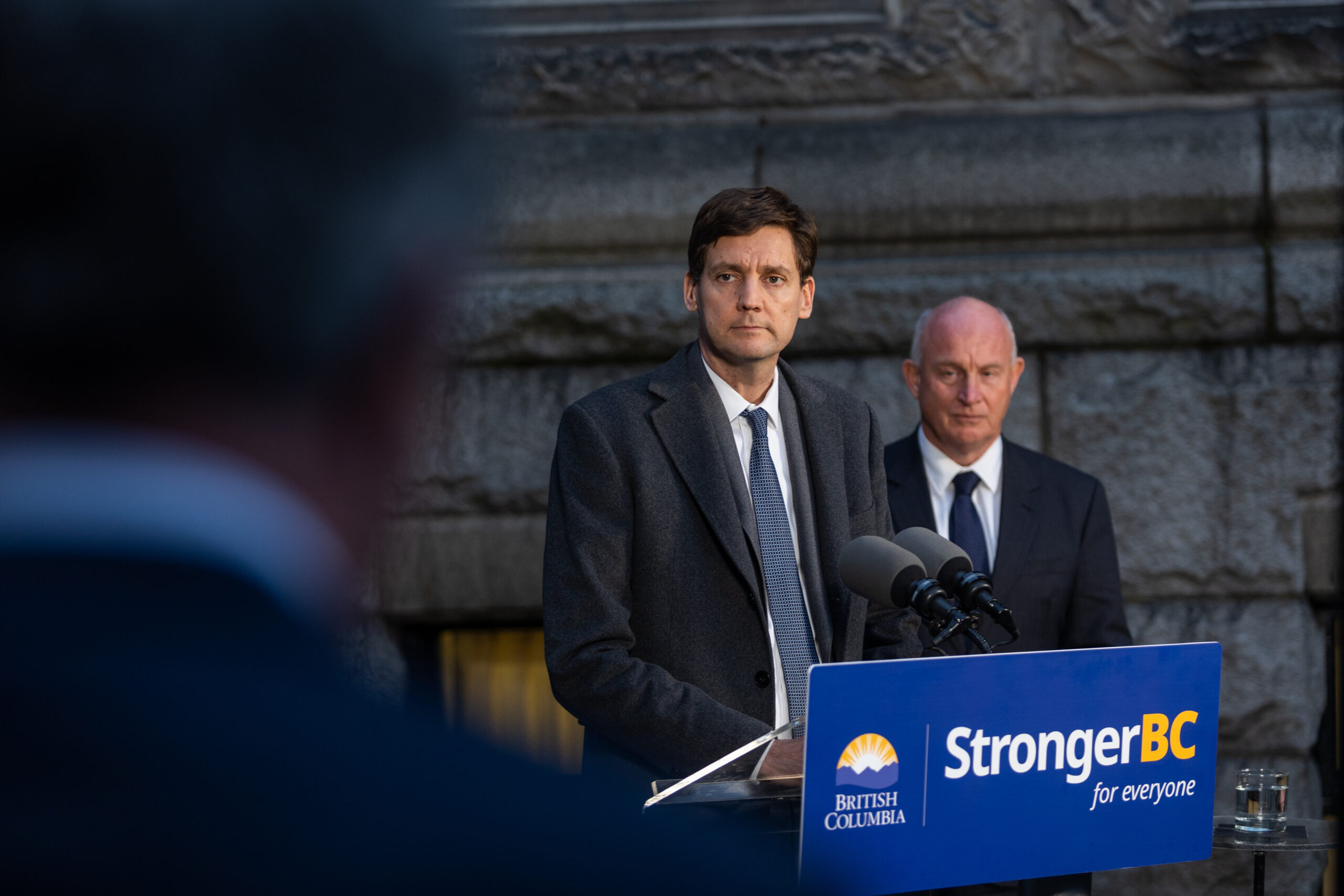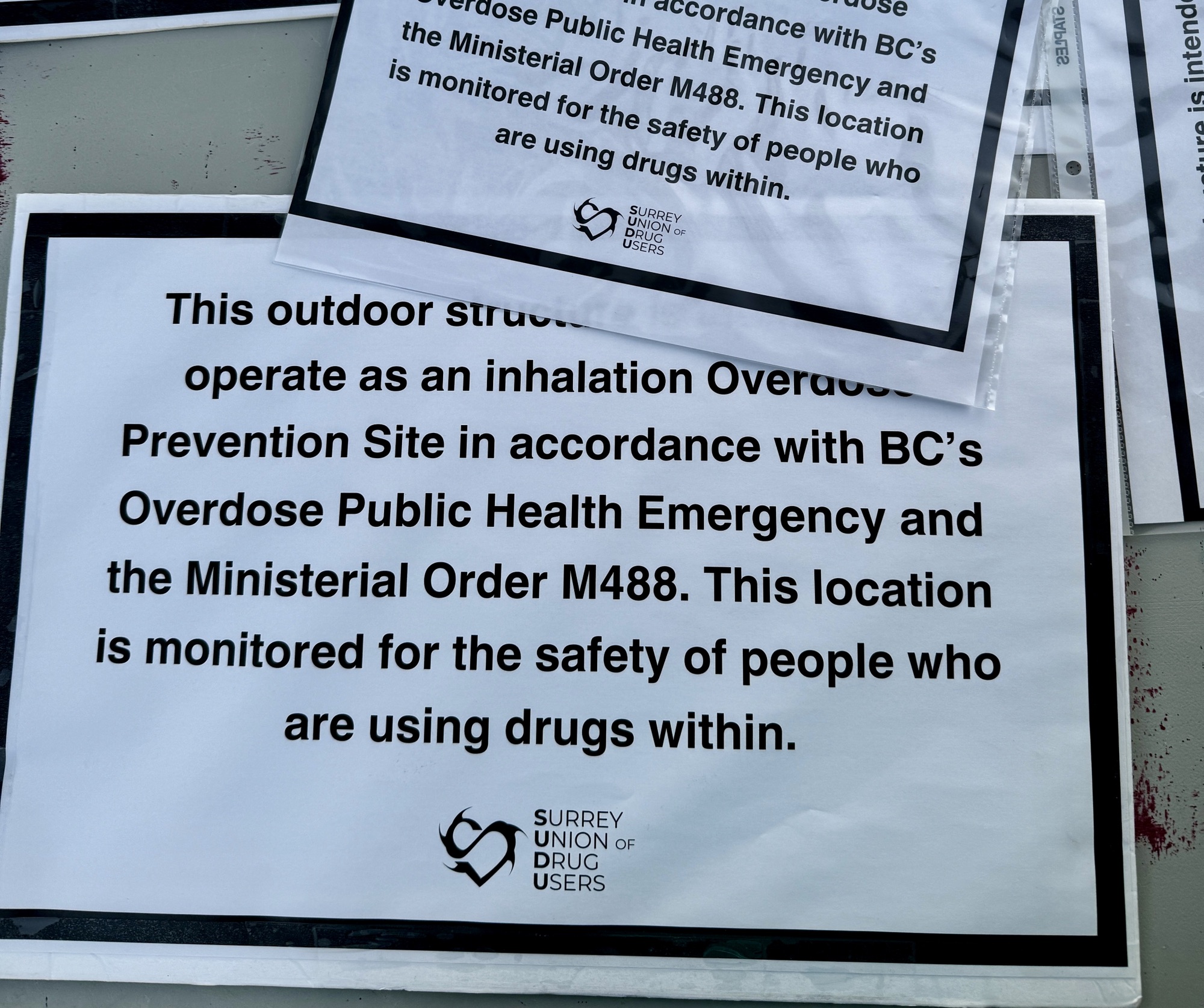
While arts and culture aren’t bad things, governments and developers have increasingly instrumentalized them as a way to stimulate market value in marginalized and working class communities. Under intense pressure by the City to develop, BC Artscape is the latest wolf in sheep’s clothing making an incursion into Chinatown.
When she was a child, Jannie Leung and her dad made regular weekend shopping trips to the Sun Wah Centre at 268 Keefer Street. Back then, the mall was bustling, and even had a grocery store in the basement. This experience, she recalls, was “formative for me as a Chinese person, going to Chinatown.”
Anyone who has visited the mall in recent years knows that only a handful of shops remain. In many ways, the building is emblematic of the devastating impact of gentrification on the small businesses that cater to the Chinese community.
All of this vacant space, however, makes way for new possibilities. In March of 2016, Leung, an organizer with Chinatown Action Group (CAG), helped coordinate an event on the building’s empty third floor called ‘Untold Stories: Voices of Chinatown Seniors.’ The event invited Chinese seniors to share their stories of living in Chinatown and how gentrification was impacting them. For Leung, the choice of venue was very symbolic, and got her inspired: “there were all these empty spaces, and we were [thinking] wouldn’t this be amazing if this were a hub for the community, for political organizing, for grassroots organizations?”
In a prophetic turn, a process began last December to prime the building into a community cultural hub – though not quite in the way that Leung had imagined. An upstart organization called BC Artscape signed a 10 year lease with Sun Wah Group to rent out 48,000 square feet of the building, with the intent of creating a “multi-tenant creative hub.” Founded in 2014, the group is affiliated with the Toronto-based Artscape, a “not-for-profit urban development organization” with a multi-million dollar budget and a glowing reputation among condo developers and those who trumpet the virtues of mixed-use planning. Among other things the group is infamous for its role redevelopment of Regent Park.

The vacated third floor of the Sun Wah Centre. BC Artscape plans on opening this space to its tenants this October.
Artscape’s method, which they have branded “creative placemaking,” involves raising public and private capital to purchase or lease underused properties. More often than not the buildings are located in low-income neighbourhoods. The spaces are then rented out to professional artists and registered not-for-profits at below-market rates.
After a development is up and running, it becomes financially self-sufficient, maintaining itself on rent, as well as event rentals. In the case of BC Artscape, the project was also helped with the generous funds – a total of $900,000 – from the City of Vancouver, VanCity Community and the J.W. McConnell Foundation.
A match made in real estate heaven
Over the past decade in Toronto, Artscape has become a very attractive partner for developers. There are two main reasons for this. For one, the partnership yields bigger condos. Under Section 37 of Toronto’s Planning Act, the City will lift height and density restrictions on proposed projects if developers provide “community benefits.” This elastic term can take the form of park improvements, affordable housing, bike racks, a historical plaque or, yes, arts studios. So developers may concede a few storeys of market housing to Artscape, but in turn the City will grant the developers more floors to develop.
Second, and more perniciously, cities and developers have come to recognize the effectiveness of arts and culture at making neighbourhoods more desirable for prospective homeowners. Under the premise that keeping space for artists and creatives will help to preserve an area’s je-ne-sais-quoi, developers are more than willing to position themselves as cultural benefactors. Look no further than the $7 million Rize gifted to several Mt. Pleasant-based galleries in exchange for the rezoning of its 19-storey condo (Vancouver has its own version of Section 37, though here they’re called Community Amenity Contributions). What makes this strategy politically and economically problematic is that cities and developers are actually targeting predominantly low-income communities with the intent of increasing land value. And though a few artists may come out with affordable space, this fact is often publicized in ways that obscure the larger processes of gentrification taking place – and the displacement that will inevitably follow. Activists have taken to calling this tactic “artwashing.”
Daniels Spectrum is a case-in-point: a 60,000 square foot, $38 million cultural centre in Toronto’s Regent Park. Completed in 2012, the hub is a product of Artscape’s partnership with Daniels Corp., who fronted $4 million out of a total 10 million raised in private funds. Regent Park was originally built as a public housing project for recent immigrants in the 1940s, and is still home today to a significant low-income and racialized population. In the 2006 census Regent Park housed 1145 black people, 815 South Asian, 365 Chinese, and 100 Latin American people.

View of Toronto’s Regent Park in 2008, during Phase One of its redevelopment. Today, only one of the five original public housing towers (seen at right) still stands.
The community has seen drastic and violent changes since the City launched a massive 15-year plan for “revitalization” back in 2006. The three-phase project has forced large-scale relocation of low-income residents – their temporary new dwellings were decided by lottery – while their homes were demolished and replaced. With the addition of over 3,000 new condo units, a neighbourhood that was originally 100% social housing will see that shift to around 25% within the next few years.
In the wake of such violent displacement, Daniels Spectrum has become the focal point for positive spin about the neighbourhood’s transformation. Confoundingly, Artscape is congratulated both for their real estate savvy and their concern for keeping arts and culture in the community. Meanwhile, the hub has become the focal point of a cluster of new condo towers, many of them built by Daniels Corp.
Against revitalization
Vancouver’s Chinatown is at a similar crossroads. The City earmarked the neighbourhood for economic revitalization in 2009, which led to a lifting of its building height restrictions two years later. This has since paved the way for a wave of new galleries and upscale developments. BC Artscape’s bid at Sun Wah is only the most recent example of this bigger trend, though given the scale of the project – not to mention Artscape’s reputation in Toronto – their intrusion sets a dangerous precedent.
The connection between arts and culture and real estate speculation isn’t lost on Vincent Tao, librarian at 221A and another CAG organizer. “Artists are the city’s favourite kind of poor people,” he says. Leung agrees, adding that this top-down strategy of bringing in artists is “a way to make it more palatable for white, middle-class people to move into the neighbourhood.”
Rest assured, condo developers have been trying. Just down the street from the Sun Wah Centre, the community has been waging a pitched battle against Beedie Development and its proposed condo tower at 105 Keefer. Both Leung and Tao were involved in organizing the opposition, and spoke at the City Hall hearings during the last week of May, along with over 300 Chinatown residents and concerned citizens. Given the volume of resistance, and perhaps also to maintain some minimal credibility after an awkward heap of controversies about the hearing process, the City rejected Beedie’s proposal on June 13.

Recently the City of Vancouver rejected Beedie’s proposal for a 12-storey condo at 105 Keefer Street. The lot remains empty.
For community activists, it has been and continues to be an uphill struggle to get a seat at the table. CAG and the Chinatown Concern Group have been fighting to see the land at 105 Keefer sold to the public and made into 100% welfare-pension rate social housing. Before Beedie’s proposal was rejected, constant pressure from the two groups had led to the developer offering 25 social housing units (which would be paid for not by the developer, but by other levels of government). Leung contends that this measly concession wouldn’t have made up for the development’s impact on the area’s low-income groups and low-income housing. “How much profit are they making?” she asks. “And then you’re giving us this? Those numbers just don’t make sense. Obviously you can give a bit more if you say you care about the future of this neighborhood!”
Of prime concern was the fact that building luxury condos not only raises property values in the surrounding area, it also serves a more privileged group at the expense of the needs of Chinatown’s low-income community.
Consulting with whom?
So what makes BC Artscape any different? Do Chinatown residents have any say in what the space will become, and who it will serve? In theory, Artscape’s projects are meant to be the result of extensive community consultation led by a steering committee, who represent the interests of diverse stakeholders. What did this look like in practice?
Leung attended two of the information sessions BC Artscape held in December and February. She made sure to ask lots of questions, expressing her concerns about Toronto Artscape’s failings in low-income communities. These fears weren’t allayed or even addressed by the steering committee they chose, a group made up of business owners, arts administrators, one heritage lobbyist, and absolutely zero low-income residents. “Who’s going to be affected the most by this project?” she asked. “It’s going to be the Chinese seniors, the low-income residents of Chinatown and the Downtown Eastside. In my mind, these people should control the process.”
After receiving no clear answers, in the end Leung felt that their community engagement wasn’t transparent and, what is more, tokenistic. “They talk about consultation but it was very clear that they’re the ones who have the power to accept or reject any ideas that we give,” she says. And though there were efforts made to include Chinese residents in the process – their reports back to the community were bilingual – they were in fact leaving the decision-making to those who would reap the economic benefits of the project. “There’s a certain respectability politics that goes on [in this process], and I don’t think [CAG’s] feedback carries as much weight as, say, the traditional prominent leaders of the society or business owners.” Confronted with ambivalence towards the needs of low-income Chinese residents, Leung left with no assurances that BC Artscape will be any different than its Toronto counterpart.
Master-planning a community
In April, the steering committee and BC Artscape’s director, Genevieve Bucher, staged a roundtable with a few Chinatown-based arts organizations. Vincent Tao and Y Vy Truong were both invited to attend, Tao representing 221A and Truong representing Centre A as a long-time volunteer (both stress, however, that the opinions they share in this article are personal and do not necessarily represent the positions of these two institutions).
Before the event, both were confused about what the aims of this roundtable were. “Other than being Chinese-identified, PoC, or just a part of the arts and culture community in Chinatown, there was no specific reason as to why they asked us to come in and talk with them,” Truong says.
At first Tao thought it had something to do with tenant selection. “I thought that they had not chosen [the tenants] and they wanted to hear from us about how to choose. And it was only after some pressure that they said, ‘No, we’ve chosen.’” As if to confirm that this topic was off the table, the steering committee refused to even disclose who they selected, and were unclear about their criteria. Tao was frustrated about this lack of transparency. To him, it seemed like they were trying to “master-plan a community.”
After pressing them further, it seemed the only things that BC Artscape wanted their advice about was the possibility of hiring a program developer for the space, and to ask for help in “building capacity” in the neighbourhood. Tao asked them to clarify what they meant by “building capacity”—building capacity for whom? It would appear that this is how BC Artscape was hoping to establish legitimacy in the neighborhood, by partnering with other existing arts organizations. This didn’t sit right with Tao or Truong, nor did it address their larger concerns about community outreach. Tao continues, “I think there was a fundamental slippage in who they think [our] community is.”
Truong hoped to learn more about how BC Artscape would hold themselves accountable to Chinatown residents, but felt in the end that they were deferring that responsibility. She explains, “While they are trying to have community discussions, they weren’t really being liable for why they were doing this, or how they would further engage the different political opinions of people who are already here.” Instead, “the onus is actually put onto the tenants to put more time and work and effort into maintaining Artscape as this community-engaged space.”
During the discussion, Tao pitched the idea of picking up where 105 Keefer couldn’t by having a fully programmed community space for Chinese seniors. Artscape’s director rebutted that they were in fact providing a free space in the building, and that some of the not-for-profits may end up using it in that capacity. Tao found this vagueness and lack of commitment frustrating. “The thing about cultural programming and about how to access communities that don’t speak the same language as you – you can’t just make a room and then just expect people to come in and use it!”
Truong had a clear impression after she left the roundtable. “They want to produce a community, they want to produce profit.”
Art and culture can resist instrumentalization
Vancouver’s Chinatown, like other Chinatowns all across North America, is the product of violent racial and legal exclusion amidst an already violent settler-colonial project. It is also a place of comfort and safety for many low-income racialized people. And while arts and culture in and of themselves aren’t bad things, governments and private companies have increasingly taken to weaponizing them as a means of stimulating market value in underserved communities – a tactic that only deepens these communities’ marginalization. Y Vy Truong points to how city-funded culture and heritage initiatives in fact historicize ongoing struggles, framing Chinatown as a sort of living museum. “We’ve situated this whole community in the past,” she says, “as if to assume that the issues here cannot exist within the contemporary [moment], and that these issues have already passed.”

City-funded historical plaque in a shopfront window on Keefer Street.
Outside of Vancouver, activist groups such as the Chinatown Art Brigade in New York City are fighting back against familiar racist urban planning tactics. Faced with a wave of new galleries, cafes and bars, CAB organizes grassroots art projects that touch on social justice themes, raising awareness about these new businesses’ complicity in stoking mass displacement. The group recognizes, however, that dissenting art must go hand in hand with action. Together with the Chinatown Tenants Union, they are also campaigning for a community-based rezoning plan that would help stifle gentrification and create affordable homes for low-income people.
Resistance efforts such as these only reinforce the fact that solutions need to be articulated by the very groups threatened with displacement. Back in Vancouver, CAG and CCG have spent the past several years conducting a series of surveys and discussions with Chinese seniors as part of the development of the People’s Vision for Chinatown. Leung says that two common issues raised by those surveyed are food security and cost of living. “I think the loss of grocery stores has been really harmful for them,”,she says. “They have to go farther and farther to get their basic needs.” Unsurprisingly, affordable studio spaces aren’t really on most seniors’ radars.

The Asian Resource Centre in Oakland, California, a project of the East Bay Asian Local Development Corporation.
If Leung had any say in how the Sun Wah Centre was utilized, she would love to see it become a space controlled by the community, for the community. This could be an opportunity to meet some of the most pressing needs identified in the People’s Vision, such as affordable, accessible, and culturally-appropriate retail stores, community spaces and social services. In practice, such a grassroots space would be similar to the Asian Resource Centre in Oakland’s Chinatown, a building for language-accessible social services, community organizations and political advocacy groups.
“It would be so great if this was a hub to both serve the community and promote leadership in the community, to build capacity for low-income residents, like Chinese seniors, to be able to participate in democratic processes, for them to have a voice, for them to demand that their rights be fulfilled.”
Because as things stand? “There isn’t that space in Chinatown.”

















